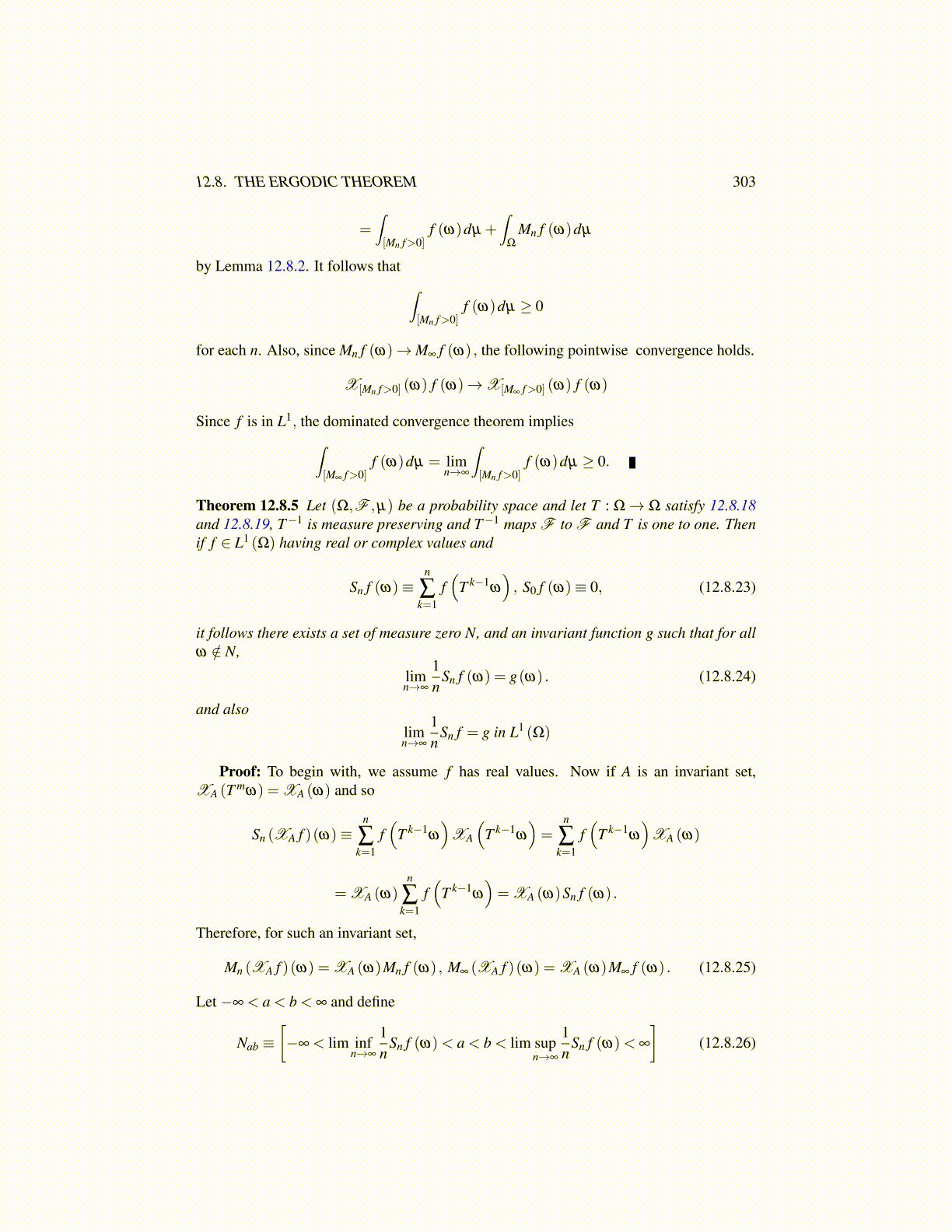
12.8. THE ERGODIC THEOREM 303
=∫[Mn f>0]
f (ω)dµ +∫
Ω
Mn f (ω)dµ
by Lemma 12.8.2. It follows that ∫[Mn f>0]
f (ω)dµ ≥ 0
for each n. Also, since Mn f (ω)→M∞ f (ω) , the following pointwise convergence holds.
X[Mn f>0] (ω) f (ω)→X[M∞ f>0] (ω) f (ω)
Since f is in L1, the dominated convergence theorem implies∫[M∞ f>0]
f (ω)dµ = limn→∞
∫[Mn f>0]
f (ω)dµ ≥ 0.
Theorem 12.8.5 Let (Ω,F ,µ) be a probability space and let T : Ω→ Ω satisfy 12.8.18and 12.8.19, T−1 is measure preserving and T−1 maps F to F and T is one to one. Thenif f ∈ L1 (Ω) having real or complex values and
Sn f (ω)≡n
∑k=1
f(
T k−1ω
), S0 f (ω)≡ 0, (12.8.23)
it follows there exists a set of measure zero N, and an invariant function g such that for allω /∈ N,
limn→∞
1n
Sn f (ω) = g(ω) . (12.8.24)
and alsolimn→∞
1n
Sn f = g in L1 (Ω)
Proof: To begin with, we assume f has real values. Now if A is an invariant set,XA (T mω) = XA (ω) and so
Sn (XA f )(ω)≡n
∑k=1
f(
T k−1ω
)XA
(T k−1
ω
)=
n
∑k=1
f(
T k−1ω
)XA (ω)
= XA (ω)n
∑k=1
f(
T k−1ω
)= XA (ω)Sn f (ω) .
Therefore, for such an invariant set,
Mn (XA f )(ω) = XA (ω)Mn f (ω) , M∞ (XA f )(ω) = XA (ω)M∞ f (ω) . (12.8.25)
Let −∞ < a < b < ∞ and define
Nab ≡[−∞ < lim inf
n→∞
1n
Sn f (ω)< a < b < lim supn→∞
1n
Sn f (ω)< ∞
](12.8.26)